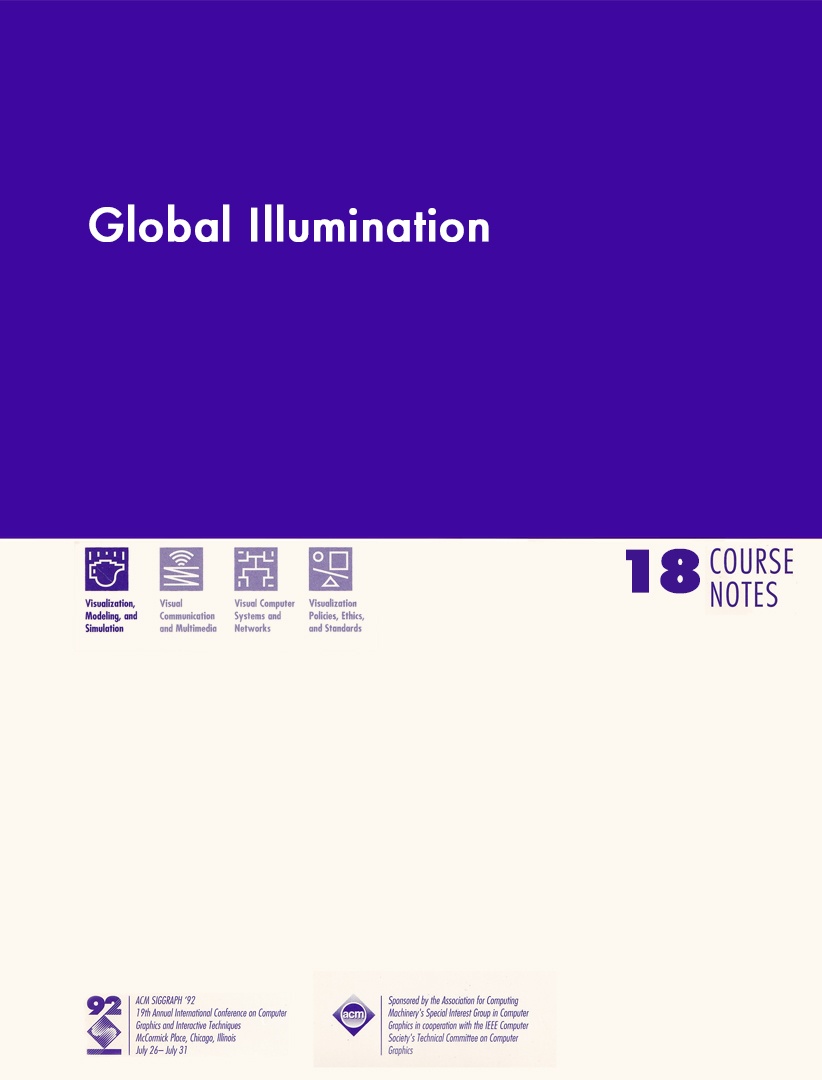“Global Illumination” by Heckbert, Rushmeier, Shirley, Sillion and Ward
Conference:
Type(s):
Entry Number: 18
Title:
- Global Illumination
Course Organizer(s):
Presenter(s)/Author(s):
Abstract:
Advanced
Knowledge of calculus and on interest in advanced numerical techniques are essential. Some familiarity with radiosity and ray-tracing algorithms is recommended.
Who Should Attending
Researchers and programmers working in any area of science or engineering (not just computer graphics) who are interested in understanding global illumination at an advanced level.
Objectives
This course explores global illumination from a mathematical perspective, employing symbolic techniques to describe the phenomena of reflection, transmission, and scattering of light, and the use of numerical techniques to create fast, accurate simulations. Techniques that have been derived and verified theoretically are favored over ad hoc techniques. Unsolved problems and promising areas of research are discussed.
Description
This course investigates the phenomenon of global illumination (the scattering of light in 3D scenes) and current algorithms for its simulation, including both radiosity and ray-tracing approaches. Mathematical tools such as integral equations, finite element methods, and Monte Carlo techniques are described. Current techniques ore described for extending radiosity methods to non-diffuse and foggy environments, and for extending ray-tracing methods to diffuse environments.
Contents/Schedule PDF:
Contributed By:
- Mary Whitton
Location:
- Charles Babbage Institute Archives, University of Minnesota




